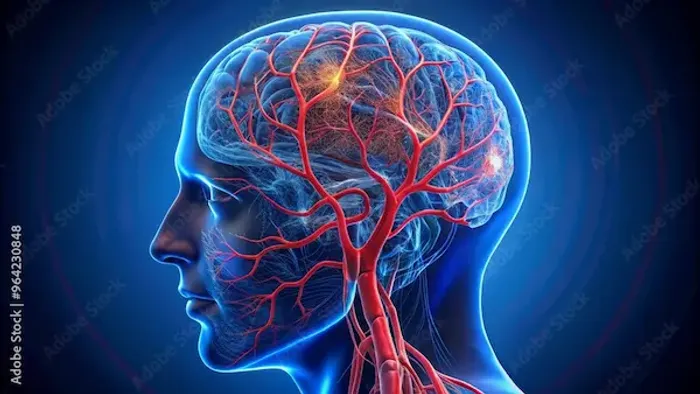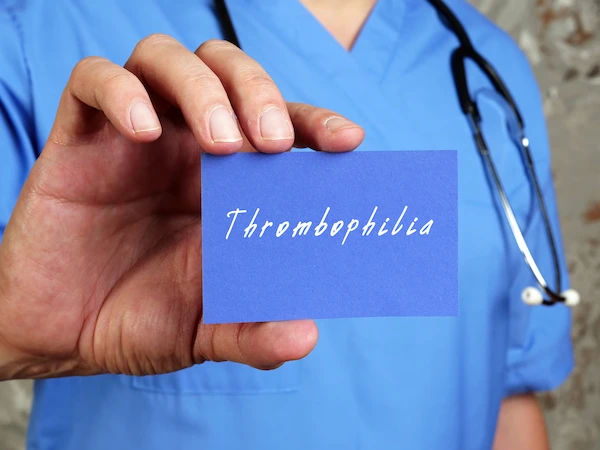Guide to Interventional Neurology Neurosciences
Explore interventional neurology and discover minimally invasive treatments for brain and spine conditions, promoting faster recovery and improved outcomes.


Introduction
Imagine treating a life-threatening condition like a stroke or a brain aneurysm not with a large incision and open surgery, but through a tiny puncture in the wrist or groin. This is the revolutionary promise of interventional neurology, a cutting-edge sub-specialty that is transforming how we treat complex neurological disorders. Often described as "keyhole surgery for the brain and spine," this field combines advanced imaging technology with slender catheters and micro-devices to navigate the intricate network of blood vessels from within. The goal is to diagnose and treat problems directly at their source, offering hope and healing with significantly less trauma to the body. This guide will demystify interventional neurology and neurosciences, explaining the conditions it treats, the remarkable procedures involved, and what patients can expect from this minimally invasive approach to care. Whether you're seeking information for yourself or a loved one, understanding these options is a critical step toward making informed healthcare decisions.
Why Choose a Minimally Invasive Approach? Key Benefits
When facing a neurological condition, the treatment path can feel daunting. Interventional neurology offers a compelling alternative to traditional open surgery, with benefits that directly impact a patient's quality of life and recovery.
Faster Recovery Times and Shorter Hospital Stays
Because the procedures involve only a small access point, the body experiences far less physiological stress. Instead of weeks of recovery from a craniotomy (opening the skull), patients who undergo a minimally invasive brain surgery like a thrombectomy might be walking within a day or two and often have significantly reduced time in the hospital. This allows for a quicker return to daily life, work, and family.
Reduced Risk of Complications and Less Pain
Large incisions carry risks of infection, significant blood loss, and reactions to anaesthesia. Endovascular techniques drastically minimise these risks. The procedure is typically performed under sedation or light general anaesthesia, which is safer for many patients. Post-operative pain is also considerably less, often managed with simple pain relievers rather than strong opioids.
Precision Treatment with Minimal Scarring
Using real-time X-ray guidance (fluoroscopy), interventional neurologists can navigate instruments with extraordinary precision to the exact site of the problem, whether it's a clot deep in the brain or an aneurysm on a delicate artery. This precision spares surrounding healthy tissue. Furthermore, with the incision being just a few millimetres, there is little to no visible scarring, a benefit both cosmetically and for overall patient well-being.
Consult an Interventional Neurologist for the best advice
Common Conditions Treated by Interventional Neurologists
Interventional neurology is not for every neurological issue, but it is the frontline treatment for several critical conditions affecting the brain and spine's blood vessels.
Ischaemic Stroke: Emergency Clot Removal
An ischaemic stroke occurs when a blood clot blocks an artery supplying the brain. Time is brain cells, and mechanical thrombectomy is a life-saving procedure where a stent retriever is used to physically remove the clot and restore blood flow. This emergency stroke treatment without surgery has revolutionised stroke care, dramatically improving outcomes for eligible patients.
Brain Aneurysms: Preventing a Rupture
A brain aneurysm is a weak, bulging spot on a brain artery. If it ruptures, it causes a haemorrhagic stroke. Interventional neurology offers two primary ways to treat aneurysms from within the vessel: endovascular coiling (filling the aneurysm sac with platinum coils to seal it off) and flow diversion (placing a stent across the aneurysm's neck to redirect blood flow and allow the aneurysm to heal). The success rate for coiling is very high, making it a preferred option for many.
Arteriovenous Malformations (AVMs): Correcting Tangled Vessels
AVMs are a rare, complex tangle of abnormal blood vessels connecting arteries and veins in the brain. They can rupture, causing bleeding and seizures. Through a technique called embolisation, an interventional neurologist can inject a special glue or particles through a catheter to block off the abnormal vessels, either curing the AVM or making it smaller and safer for possible surgical removal.
Spinal Fractures and Tumors: Vertebroplasty and Kyphoplasty
For painful spinal fractures caused by osteoporosis or tumors, interventional neurology provides relief. In vertebroplasty, medical bone cement is injected into the fractured vertebra to stabilise it. Kyphoplasty involves first inserting and inflating a balloon to create a cavity, then injecting the cement, which can help restore lost height. These procedures effectively alleviate pain and improve mobility.
A Closer Look at Key Interventional Neurology Procedures
Understanding what happens during these procedures can alleviate anxiety. Here’s a simplified breakdown of three common techniques.
Mechanical Thrombectomy for Acute Stroke
This is a race against time. A catheter is guided from the femoral artery in the groin or the radial artery in the wrist all the way up into the blocked brain artery. Using real-time imaging, the physician navigates a stent retriever (a tiny, mesh-like device) through the catheter and deploys it into the clot. The stent intertwines with the clot, and both are then gently withdrawn, removing the obstruction and restoring crucial blood flow to the brain.
Endovascular Coiling and Flow Diversion for Aneurysms
For endovascular coiling, a micro-catheter is navigated directly into the aneurysm sac. Soft platinum coils, thinner than a strand of hair, are pushed through the catheter and packed into the aneurysm. This packing promotes blood clotting within the aneurysm, effectively sealing it off from the circulation. Flow diversion uses a densely woven mesh stent placed in the main artery, covering the neck of the aneurysm. This disrupts the blood flow into the aneurysm, causing it to clot and eventually shrink over time.
Angioplasty and Stenting for Narrowed Arteries
Similar to procedures done in the heart, this technique addresses atherosclerosis (plaque buildup) in the neck or brain arteries. A catheter with a small balloon at its tip is inflated at the site of narrowing to widen the artery. Often, a flexible mesh tube called a stent is then permanently placed to act as a scaffold, keeping the artery open and reducing the risk of a future stroke.
The Patient Journey: From Diagnosis to Recovery
Knowing what to expect can empower patients and families.
Step 1: Advanced Diagnostic Imaging (Angiograms, MRI, CTA)
The journey begins with precise diagnosis. This often involves a CT Angiogram (CTA) or MR Angiogram (MRA) to get detailed pictures of the blood vessels. In some cases, a cerebral angiogram, a more detailed diagnostic imaging test where contrast dye is injected through a catheter, is performed by the interventional neurologist to get a real-time, high-resolution map of the vasculature. If you need such specialised imaging, consulting a neurologist who can refer you to the right specialist is crucial. You can book a consultation online with Apollo24|7 to discuss your symptoms and necessary diagnostic steps.
Step 2: The Procedure in the Neurointerventional Suite
The procedure takes place in a high-tech operating room equipped with advanced X-ray equipment. The patient is sedated, and the team works with meticulous precision. The entire process is monitored on large screens, allowing the physician to guide the instruments safely through the vascular highway to the target.
Step 3: Post-Procedure Care and Rehabilitation
After the procedure, patients are monitored closely, often in a Neuro-ICU for complex cases. The small access site is covered with a bandage. Recovery focuses on ensuring the treatment was successful and beginning rehabilitation if needed (e.g., physical or speech therapy after a stroke). Follow-up appointments and imaging are scheduled to monitor long-term success.
Conclusion: Advancing Care with Precision and Compassion
Interventional neurology represents a paradigm shift in treating some of the most frightening neurological conditions. By marrying the precision of advanced imaging with the ingenuity of micro-scale tools, it offers a path to healing that is safer, less painful, and more effective than ever before. This field continues to evolve rapidly, with new devices and techniques constantly expanding the possibilities for patient care. If you or someone you know is facing a diagnosis that might be treated through these methods, this guide serves as a starting point for informed discussions with healthcare providers. Remember, timely diagnosis is key. If you experience sudden symptoms like severe headache, vision loss, weakness, or speech difficulty, seek emergency care immediately. For non-emergency consultations about chronic conditions, you can connect with a specialist through Apollo24|7 to explore your options.
Consult an Interventional Neurologist for the best advice
Consult an Interventional Neurologist for the best advice

Dr Debnath Dwaipayan
Neurosurgeon
9 Years • MBBS, MS(Gen. Surgery), DrNB (Neurosurgery)
Delhi
Apollo Hospitals Indraprastha, Delhi

Dr Chilukuri Venkata Reddy
General Physician
4 Years • MBBS
Bengaluru
PRESTIGE SHANTHINIKETAN - SOCIETY CLINIC, Bengaluru

Dr. S Fazal
Interventional Neurologists
7 Years • MD., DM., Fellowship in Stroke & Interventional Neurology
Tiruchirappalli
Apollo Speciality Hospitals Old Palpannai, Tiruchirappalli
(100+ Patients)

Dr. Sushith C
General Physician
2 Years • MBBS
Bengaluru
PRESTIGE SHANTHINIKETAN - SOCIETY CLINIC, Bengaluru
Dr Sumanth R
General Physician
2 Years • MBBS
Bengaluru
PRESTIGE SHANTHINIKETAN - SOCIETY CLINIC, Bengaluru
Consult an Interventional Neurologist for the best advice

Dr Debnath Dwaipayan
Neurosurgeon
9 Years • MBBS, MS(Gen. Surgery), DrNB (Neurosurgery)
Delhi
Apollo Hospitals Indraprastha, Delhi

Dr Chilukuri Venkata Reddy
General Physician
4 Years • MBBS
Bengaluru
PRESTIGE SHANTHINIKETAN - SOCIETY CLINIC, Bengaluru

Dr. S Fazal
Interventional Neurologists
7 Years • MD., DM., Fellowship in Stroke & Interventional Neurology
Tiruchirappalli
Apollo Speciality Hospitals Old Palpannai, Tiruchirappalli
(100+ Patients)

Dr. Sushith C
General Physician
2 Years • MBBS
Bengaluru
PRESTIGE SHANTHINIKETAN - SOCIETY CLINIC, Bengaluru
Dr Sumanth R
General Physician
2 Years • MBBS
Bengaluru
PRESTIGE SHANTHINIKETAN - SOCIETY CLINIC, Bengaluru
More articles from General Medical Consultation
Frequently Asked Questions
1. What is the difference between an interventional neurologist and a neurosurgeon?
Both treat brain and spine conditions, but their approaches differ. A neurosurgeon primarily performs open surgeries involving incisions and operating directly on the brain or spine. An interventional neurologist uses catheters and devices inserted through blood vessels to treat problems from within, avoiding major surgery. They often work together as a team.
2. Is interventional neurology safe?
All medical procedures carry some risk, but interventional neurology procedures are generally considered safe with a low complication rate, especially when weighed against the risks of the underlying condition or traditional open surgery. The benefits of faster recovery and less trauma typically outweigh the risks.
3. How long does it take to recover from a thrombectomy?
Recovery varies. Some stroke patients show immediate improvement. Hospital stays may be a few days to a week, followed by a period of rehabilitation (physical, occupational, speech therapy) that can last weeks or months to maximise recovery of function.
4. What are the symptoms of a brain aneurysm?
Most unruptured aneurysms cause no symptoms. If they grow large enough, they may press on nerves, causing a dilated pupil, drooping eyelid, or pain behind the eye. A ruptured aneurysm causes a sudden, extremely severe 'thunderclap' headache, often described as the worst headache of one's life. This is a medical emergency.
5. Can interventional procedures cure an AVM completely?
It depends on the size, location, and complexity of the AVM. Embolisation can sometimes cure smaller AVMs completely. For larger, more complex ones, embolisation is often used to reduce the size and blood flow, making it safer for subsequent surgery or radiation therapy.

 Ayurvedic Benefits, Nutrition, and Side Effects.webp)


